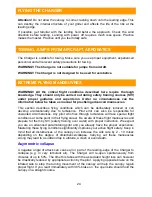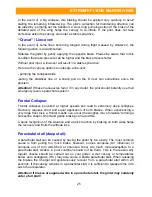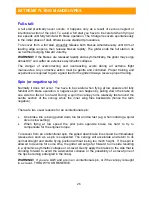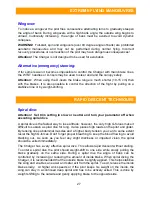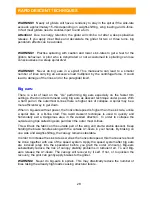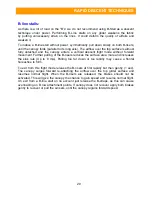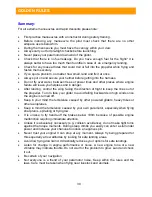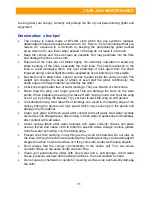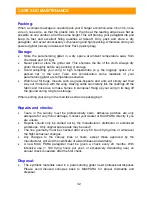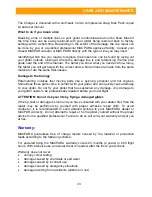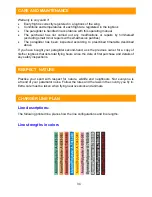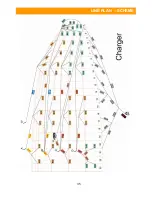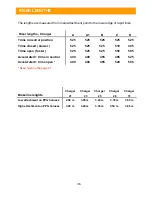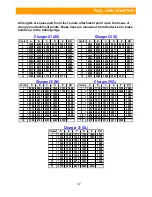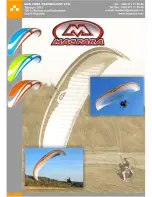
29
RAPID DESCENT TECHNIQUES
B-line stalls:
As there is a lot of load on the “B’s” we do not recommend using B-Stall as a descent
technique under power. Performing B-Line stalls on any glider weakens the fabric
by putting unnecessary strain on the lines. It could deform the quality of airfoils and
weaken it.
To induce a B-line stall without power, symmetrically pull down slowly on both B-risers,
until the canopy folds (parallel to its long axis). The airflow over the top surface is almost
fully detached and the canopy enters a vertical descent flight mode without forward
movement. Further pulling of the B-risers reduces the surface area more and increases
the sink rate (Up to 8 m/s). Pulling too far down or too rapidly may cause a frontal
horseshoe to form.
To exit from this flight mode release the B-risers at first rapidly but then gently (1 sec).
The canopy surges forward re-attaching the airflow over the top glider surface and
resumes normal flight. When the B-risers are released, the brakes should not be
activated. This will give the canopy the chance to gain speed and resume normal flight.
On exit from a B-line stall on no account just release the B-straps, as this can cause
overloading on B row attachment points. If canopy does not recover apply both brakes
gently to recover or pull the A-risers, until the canopy regains forward speed.
Summary of Contents for CHARGER
Page 1: ...1 ...
Page 10: ...10 TRIMMING ...
Page 35: ...35 LINE PLAN SCHEME ...
Page 38: ...38 ...
Page 40: ...40 ...










